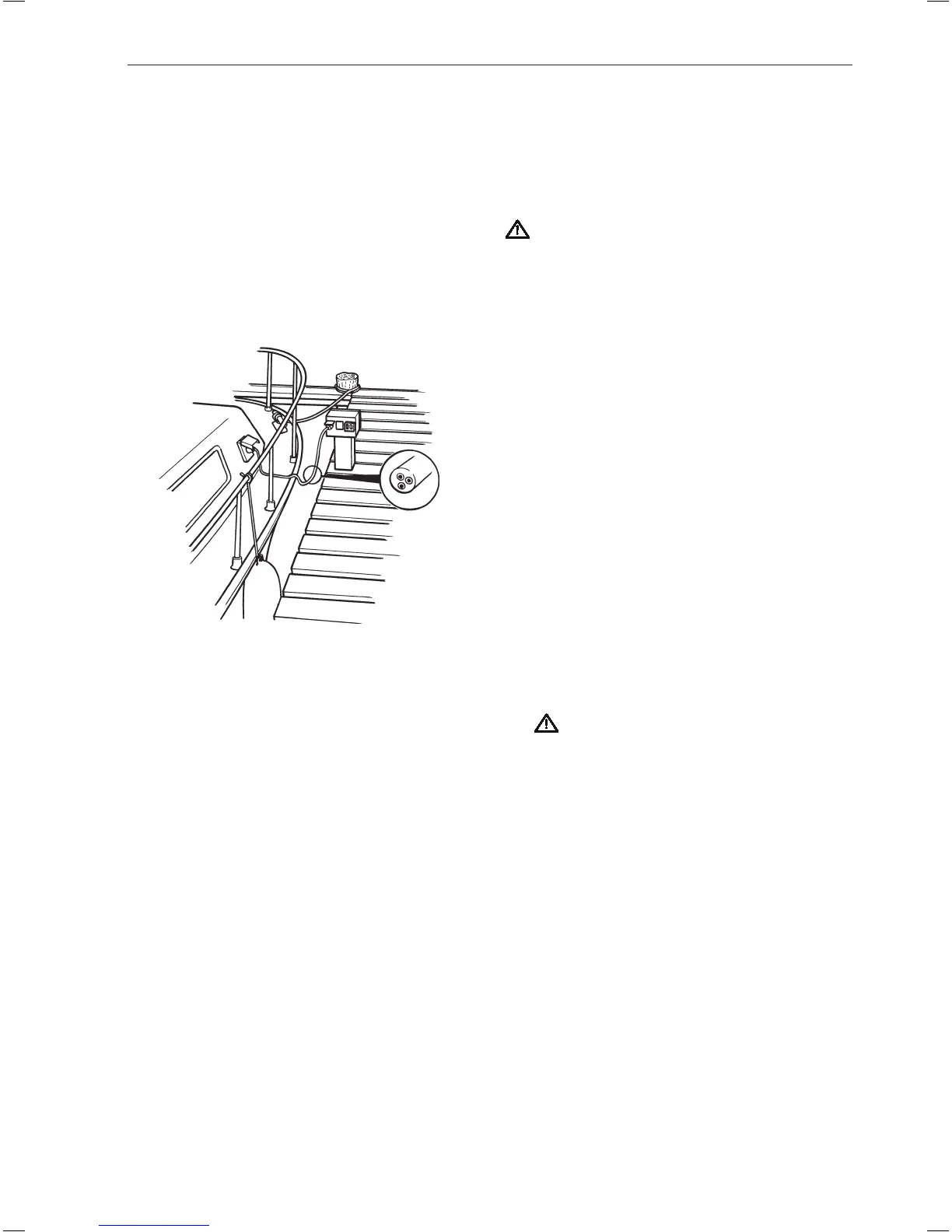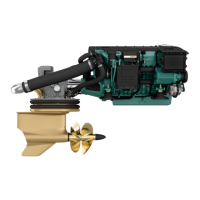Electrical installations
Leakage current from the electrical system can be
caused by incorrect installation of electrical equip-
ment. Leakage current can knock out the galvanic
protection of components such as the drive, propel-
ler, propeller shaft, rudder stock and keel and cause
damage by electrolytic corrosion.
IMPORTANT! Work on the boat’s low tension
circuit should only be carried out by qualified or
experienced persons. Installation or work on the
shore power equipment must only be carried
out by electricians authorized to work with high-
voltage installations.
The following should always be observed:
1. When shore power is connected (120V–230V),
the shore safety ground (earth) must not be con-
nected to the engine or any other ground point
on the boat. The safety ground must always be
connected to the connection cabinet's ground
(earth) terminal ashore. The safety ground should
not be connected to the negative connection on
the output side (12/24V), i.e. it must be galvani-
cally separated.
Shore power units (transformer, rectifier, battery
chargers etc.) must be intended for marine usage
and the high tension circuit must be galvanically
separated from the low tension circuit.
2. Route and clamp electric cables so that they will
not be exposed to rubbing, damp or bilge water
in the keelson.
3. Engine or drive must never be used as a ground
point.
IMPORTANT! The engine or drive must
never be used as a ground or be electrically
connected to other equipment such as the
radio, navigational equipment, the rudder,
bathing steps etc.
Protective grounds for the radio, navigational equip-
ment, rudder, bathing steps or other equipment with
separate ground leads must be connected to a com-
mon ground terminal.

